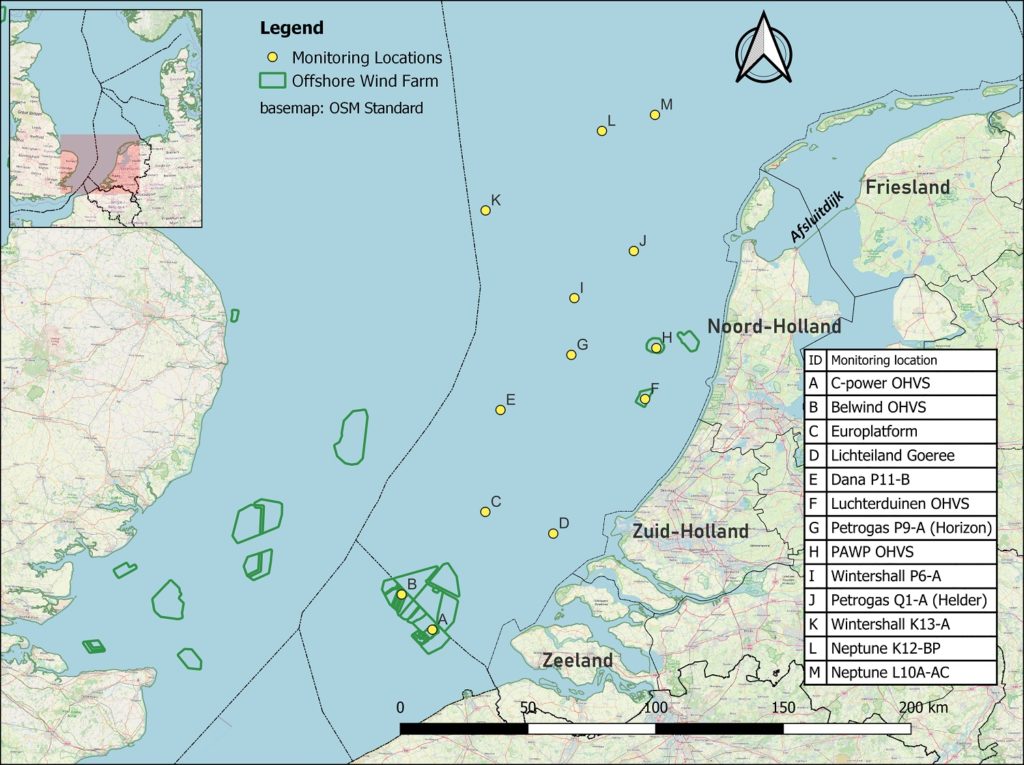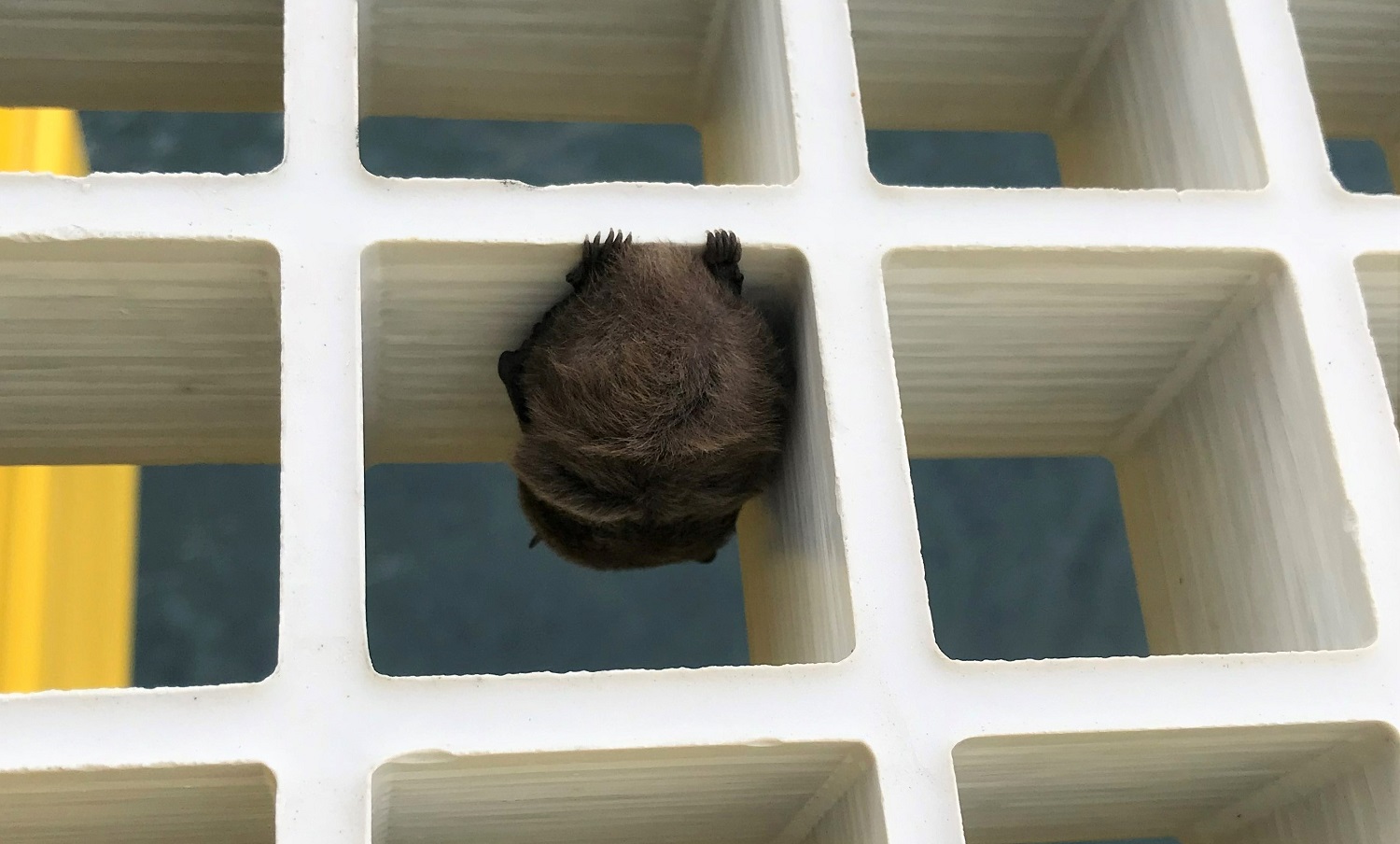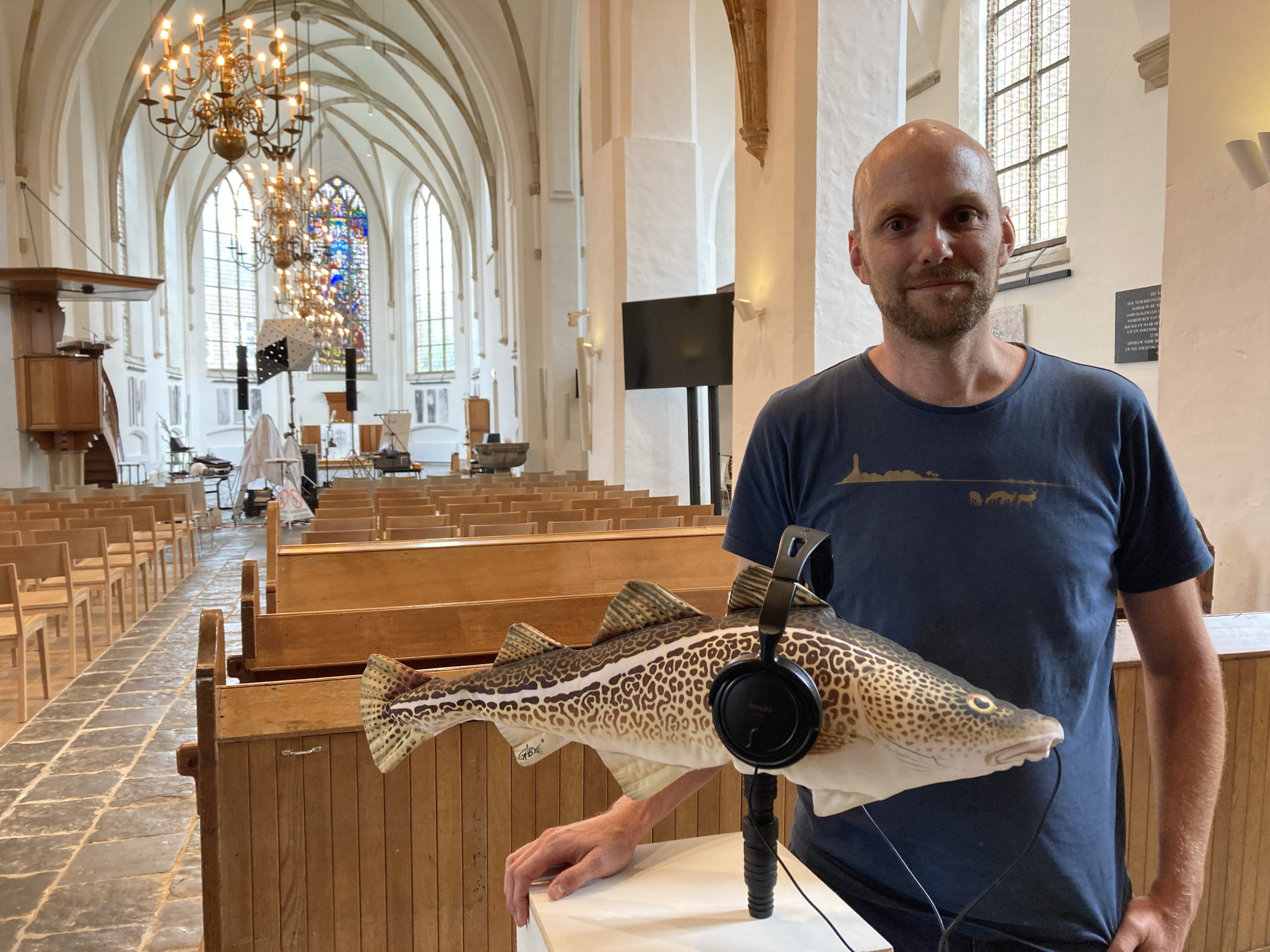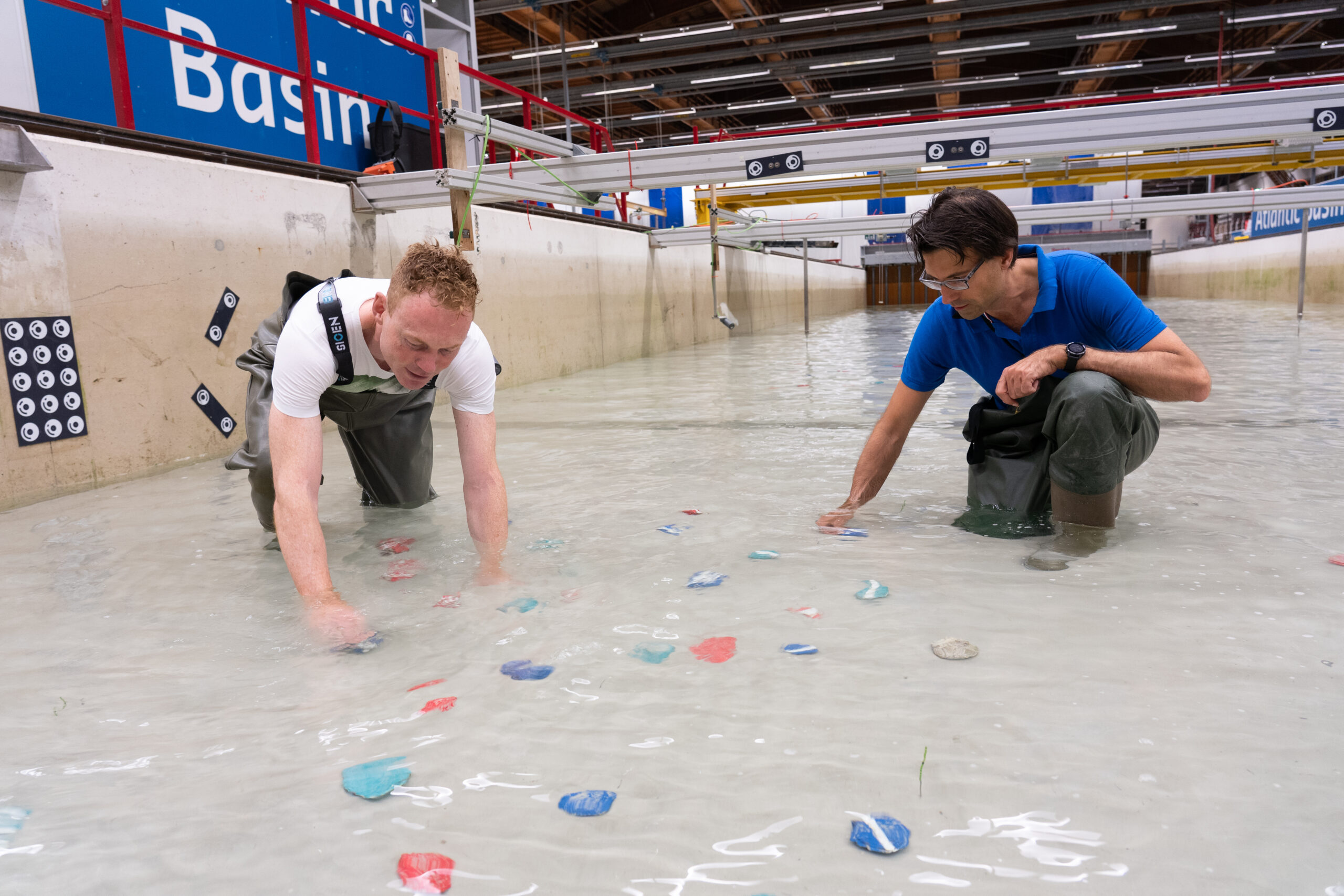Nathusius’s pipistrelle bats move along the Dutch coastline during their autumn migration. Some of them cross the North Sea, mostly to the west of the province of North Holland. The phase of the moon plays an unexpected role in this. According to a four-year study by Wageningen Marine Research, the creatures avoid full moons.
The study by researcher Sander Lagerveld and his team sets out the results of four years of using acoustic monitoring equipment to listen to passing Nathusius’s pipistrelle bats (Pipistrellus nathusii). The acoustic monitoring equipment was set up on 13 existing offshore platforms in the southern part of the North Sea. It recorded more than 2100 passing movements.
Deadly obstacle
Nathusius’ pipistrelle bats travel long distances between their summer ranges in northeastern Europe and their wintering grounds in southern and western Europe. Most of their migration takes place over land, but some of the bats also cross the Baltic Sea and North Sea. Wind turbines are often deadly obstacles during these journeys. Any measures to address this will require an understanding of migratory behaviour.
‘The Nathusius’ pipistrelle bats within the study area are most active around the coast of North Holland,’ says Lagerveld. ‘But that’s just within the study area. There may be more bats flying over the sea elsewhere, along the Belgian coast and the English Channel.’ Remarkably, crossing the North Sea often takes more than one night. The bats make stopovers along the way, on ships or oil rigs for example.

The timing of bat activity at the various monitoring points helped Lagerveld work out that these stopovers were taking place. The activity is often immediately after sunset, at locations that are too far offshore for the bats to have already covered that distance. Some of the recordings also include echolocation sounds used to locate insects. The bats are therefore actively foraging at these sites.
The most surprising finding however is that their migration shows a clear correlation with the phase of the moon. ‘Our first reaction was: is this really correct?’ says Lagerveld. ‘But the pattern is really very clear and significant. Activity decreases sharply between the full moon and the last quarter and increases sharply shortly before the new moon.’ There are several possible explanations for this relationship with the lunar phase.
Predation risk
‘During a full moon, the risk of predation is highest,’ Lagerveld explains. ‘There’s actually still little evidence for this in our part of the world, but in tropical areas that link has already been shown. The food supply can also vary with the phase of the moon, as some insects synchronise their hatching with the lunar phase.’
According to Lagerveld, the acoustic research will help build a fuller picture of the migratory habits of Nathusius’ pipistrelle bats. In addition to these offshore acoustic measurements, in 2019 a study was launched tracking tagged common pipistrelle bats as they travel along the Dutch, Belgian and UK coasts. That data still needs to be processed.

 A resting Nathusius’s pipistrelle bat on a platform. Photo Mark Wilson
A resting Nathusius’s pipistrelle bat on a platform. Photo Mark Wilson 

